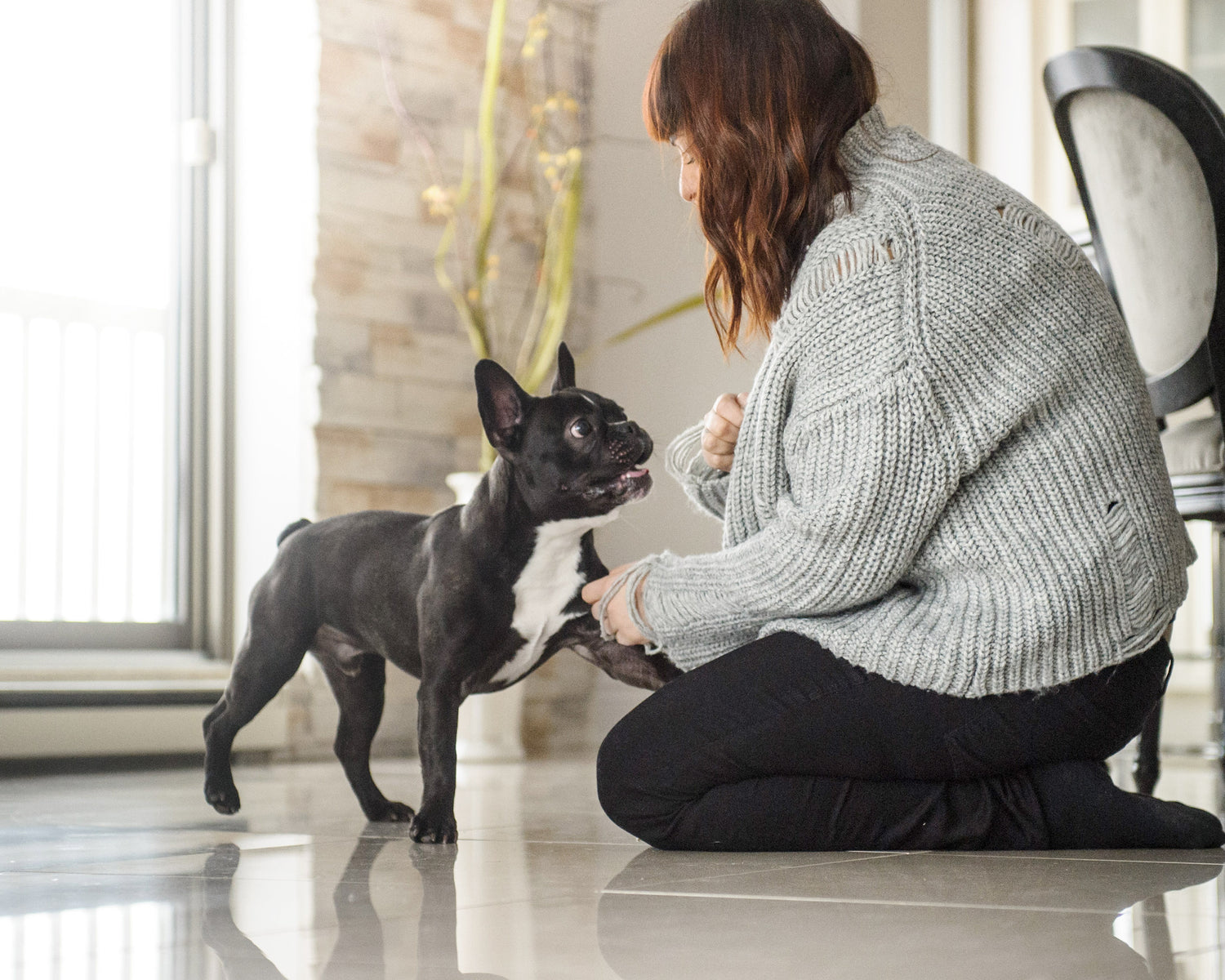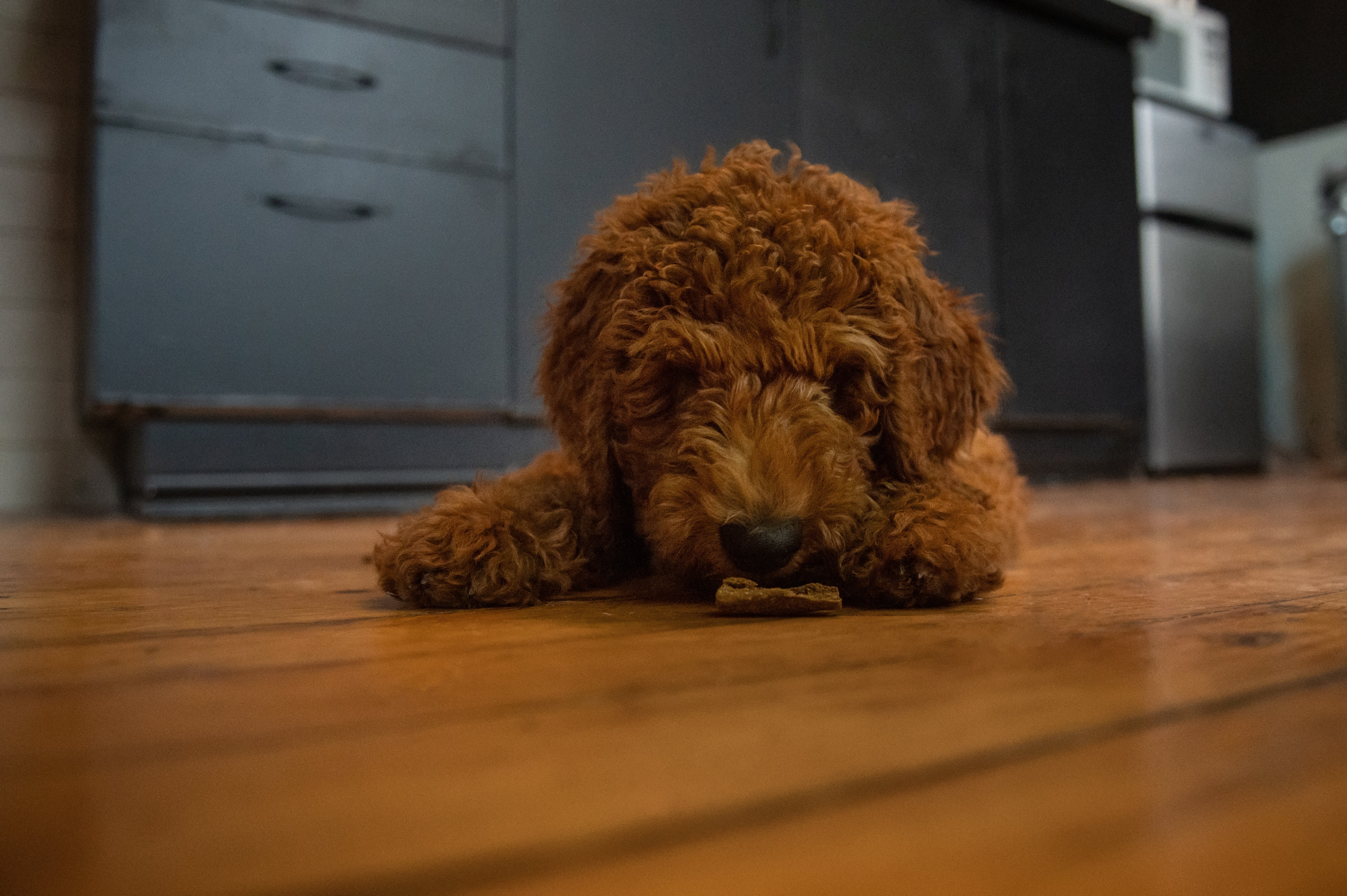Training your puppy can be a difficult process that many dog owners can relate to. Anyone that has any inkling of dog training is that one thing needs to be given - REWARDS!
The most common reward is, of course, food. Dogs are gluttons that will do anything for a tasty morsel!
Dogs repeat rewarded actions. The reward can be very useful in teaching your dog several commands and skills, or simply in teaching him to calm down for a short period. If your dog receives a treat for sitting, he will be more willing to sit again in the future.
That is why positive reinforcement training, often known as reward-based training, is so effective. Of course, you cannot keep treating your dog every time he sits or comes when you call, so how do you make effective use of the treats you have to avoid over-treating your pooch?
What is positive reinforcement?
Positive reinforcement is one of the core training principles that make up animal learning theory, rewarding desired behaviors with stuff like treats, toys, or anything else the dog might want.
Positive reinforcement is one of your most powerful tools for shaping or changing your dog's behavior because the reward increases their likelihood of repeating the behavior.
Imagine how excited you would be if someone gave you a dollar (or a thousand!) every time you do what they say? They’ll make you want to do it all over again, won’t they?
Good thing is that dogs are cheaper. A well-timed treat, their favorite toy, and praise and affection are what most dogs react positively to.
What types of rewards will a dog want?
If you want your dog to work for you on a regular and consistent basis, you must make it rewarding for them to do so. But what kind of bonuses can you provide?
A reward can be whatever your dog enjoys, such as food, affection, or toys. This may differ from dog to dog, as well as depending on the time of day and individual. A pat on the head, play session, fun toy, walk, or a food treat may suffice for some.
A vast majority of dogs will respond favorably to treats, but then there’s always the rare unicorn that’s nonchalant with food, so you’ll have to be creative in your choice of reward.
Is rewarding your dog bribery?
It is widely assumed that providing rewards to train is simply bribery, yet there is a significant distinction between the two. The primary difference is that a bribe occurs before doing something, but a reward follows after.
A bribed dog will only follow instructions when there is food in view or on offer, but a rewarded dog would perform well in the expectation of receiving something later.
Tips to choose reward wisely
If you're like the majority of pet owners, you probably want to give your pet treats for the positive behavior they show.
Treats can help strengthen our bonds with our pets and reinforce specific behavior unbelievably. But rewarding can be tricky. Having some guidelines on what, when, and how much to treat your pet can be useful.
Here are some pointers to help you to reward your dog wisely.
-
- Who doesn't enjoy treating their cute pups? However, you might want to limit their treats to a set amount every day to prevent unnecessary weight gain. As a general rule, treats should only constitute about 10% of their daily food intake.
-
- Rewards are excellent motivators, but it may take some experimenting to determine which treats your dog likes. Provide a variety of treats with varying textures and flavors to see which ones your pet prefers. Always try to use sustainable, hypoallergenic dog treats to prevent allergies and bad reactions that might be counterproductive in training your dog.
-
- People tend to get into the same old rut, with the same rewards and ever-increasing expectations, which frequently results in a dog losing interest. It gets tedious and is no longer enjoyable for the dog. Try to give them a new treat for each activity they complete. Offer him one different reward at a time or simply some praise. Keep your dog guessing!
-
- In stressful situations, use high-value rewards as needed. For example, if you give your pet biscuit-type treats for everyday training, in a more stressful scenario, such as nail-trim time, you may opt for a higher value prize, such as a dental stick or a tug session with their favorite toy.
-
- If you are giving them food as a treat, make certain that the food rewards you are giving are nutritious. It should be less than 10% of their daily calorie intake. Since the caloric density of each type of a treat differs, make sure to read the nutrition label of the snacks you're providing them to find out how many additional calories your pet is consuming daily.
-
- In terms of calories, if you want to reward your pet with a treat but are concerned about weight gain, consider extremely appealing, smaller training treats, such as dog biscuits, or you can simply reward them with a fun toy. A toy is a great motivator for some dogs, and while the vast majority of dogs love food, some dogs love attention and play even more.
-
- Dogs can sort of count. Give your dog one piece of food at a time while rewarding them. Many individuals offer their dog a handful of goodies in the misguided belief that the dog would regard it as a large reward. The dog, on the other hand, views it as a single reward.
-
- Do you like being pushed and pushed to do more without rest? Dogs, however, do not. Keep training sessions short and sweet, with plenty of playtime in between. Keep things light!
Final Thoughts On Rewards
You don’t want to get yourself into a situation where your dog will only do something if there’s food in your hand. Avoid over-treating and occasionally, switch it up a little to offer other rewards aside from food like praise and play.
With loads of patience and consistency, your dog will come to love rewards but not expect them. Good luck!




